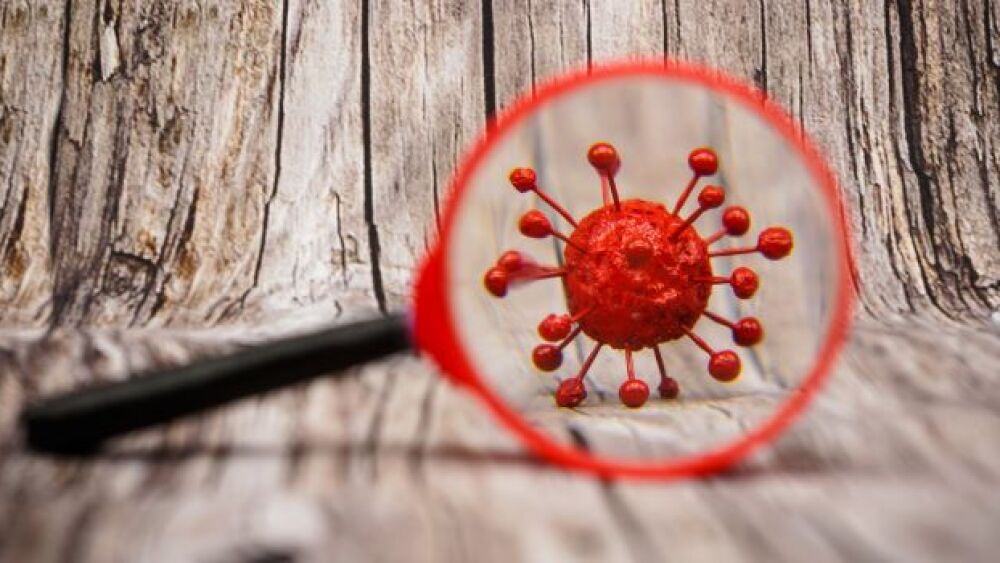The two dominant theories over the origins of COVID-19 are that the virus developed naturally, probably from bats in a wet market in Wuhan, China, and the “lab leak.”
Michael Worobey, an evolutionary biologist with the University of Arizona, has published a study in the journal Science built on medical journal studies, World Health Organization investigations, media and online accounts to weigh in on the arguments.
The two dominant theories over the origins of COVID-19 are that the virus developed naturally, probably from bats, transferred to other animals in a wet market in Wuhan, China, and was then transmitted to humans. This is the “wet market” theory.
The other theory is a “lab leak,” which argues that although the virus probably occurred naturally in bats, the Wuhan Institute of Virology (WIV) was conducting experiments on the virus, and it escaped by way of a lab accident. These theories have a political component, with American conservatives and conspiracy-minded people leaning toward the lab leak theory. However, even a U.S. intelligence report suggested both were plausible.
Worobey was one of 18 scientists who objected to a WHO report on the disease’s origins. The WHO report, which declared it “likely to very likely” that the “wet market” theory was the origin and “extremely unlikely” for the “lab leak” theory. Worobey and his colleagues said the two theories “were not given balanced consideration” and called for “a proper investigation.” However, Worobey’s new study leans more heavily now toward the “animal spillover” explanation.
But it’s not without its critics.
David Relman, the Stanford microbiologist who organized the objection to the WHO report, said, “I don’t think this advances in a major way our collective understanding of what really happened” because Worobey’s analysis is built on “third- and fourth-hand information” and is potentially unreliable.
However, Kristian Andersen, a microbiologist with Scripps Institution, said Worobey’s research uncovered “several new key insights.”
Let’s look at Worobey’s narrative.
First, it questions the data and location of the earliest reported case of what would later be called COVID-19. The earlier reports indicated a 41-year-old accountant with no ties to the Huanan Market. Instead, Worobey’s analysis found a seafood vendor who worked there. A Chinese investigative reporter cited that the accountant’s fever was from dental surgery who would then go on to develop COVID-19 eight days later.
But 11 days before China focused on the Huanan Market, physicians at two hospitals in Wuhan had diagnosed 14 unexplained pneumonia cases. Of them, eight had spent time at the market.
Marc Suchard, a UCLA researcher whose expertise is using genetic sequences to study disease spread, said Worobey’s work shows that “most early cases occur near the market, identifying it as an early epicenter.”
In Worobey’s work, 10 of the 19 earliest cases identified were linked to the market. They were all identified before the Chinese government made any announcement. One of the supportive arguments for the lab leak theory is the percentage of early cases with no ties to the market, but Worobey notes that we now know how easily COVID-19 spreads by asymptomatic or presymptomatic individuals. Severe disease typically takes two weeks from initial infection and only about 7% of infected people become hospitalized.
Which is to say, by the time people were being hospitalized with strange pneumonia, it had been circulating for at least two weeks, and Wuhan has a population of 11 million.
“In this city of 11 million people, half of the early cases are linked to a place that’s the size of a soccer field,” Worobey said. “It becomes very difficult to explain that pattern if the outbreak didn’t start at the market.”
Several genetic studies, including a study conducted by Worobey, suggested that the first infection occurred in about mid-November 2019. This was weeks before the fish vendor got sick. That would be consistent with other known pandemics, where the disease is circulating in a population for weeks before it breaks out in numbers enough to be recognized as something new and dangerous.
But is Worobey’s research definitive? That may never be determined beyond a shadow of a doubt, particularly if the Chinese government continues to withhold data from the WIV.
“I don’t disagree with the analysis,” Jesse Bloom, a virologist at the Fred Hutchinson Cancer Research Center told The New York Times. “But I don’t agree that any of the data are strong enough or complete enough to say anything very confidently, other than that the Huanan Seafood Market was clearly a super-spreading event.”
But Bloom added that Worobey’s study isn’t the first one to find mistakes in the WHO’s early investigation report, including problems with early patients’ potential ties to the market. That point suggests the possibility that although the market clearly was involved, the disease may not necessarily have originated there. For example, it’s not inconceivable that an infected person — potentially an employee at WIV — visited the busy and crowded market and accidentally spread the disease.





